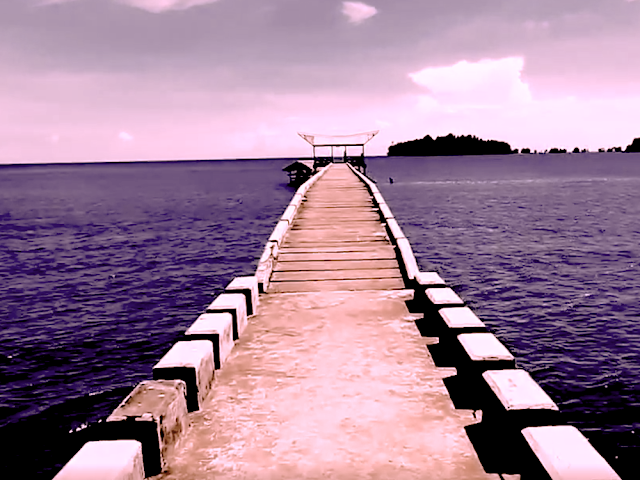Nestled in the heart of Zamboanga Del Sur, Dumalinao stands as a hidden gem waiting to be explored. Steeped in rich history and surrounded by captivating landscapes, this municipality offers a delightful blend of cultural heritage and natural beauty. Let's take a closer look at Dumalinao and the exciting things to do and places to visit in this picturesque town.
A Glimpse into Dumalinao's History:
Dumalinao is officially founded on June 16, 1956, it was part of the vast Zamboanga Peninsula before becoming a municipality. The area was originally inhabited by the indigenous Subanon people, engaging in agriculture and fishing.
Under Spanish rule during the colonial period, Dumalinao's history was influenced by Spanish colonization. It gained recognition as a distinct municipality in the 20th century, after the Philippines gained independence from Spain and during the American colonial period.
The town was named after the Dumalinao River, which sustains the community. Over time, Dumalinao experienced growth and development, with barangays established and a local government formed. Proud of its cultural heritage, Dumalinao remains a vibrant and close-knit community. Today, it continues to progress, with residents working together for a brighter future.
Preserving its history, Dumalinao embraces the present and looks forward to a promising future. Its blend of cultural heritage, natural beauty, and warm hospitality make it a captivating destination for travelers and a cherished home for its residents.
Charming Barangays and Local Government:
With 30 barangays, each with its own unique character, Dumalinao showcases the diversity and unity of its communities. The local government, led by Mayor Junaflor S. Cerilles, Vice Mayor Lorenzo Alcantara, and the Municipal Council, works tirelessly to enhance the welfare and progress of the municipality.
List od Barangays
- Anonang
- Bag-ong Misamis
- Bag-ong Silao
- Baga
- Baloboan
- Banta-ao
- Bibilik
- Calingayan
- Camalig
- Camanga
- Cuatro-cuatro
- Locuban
- Malasik
- Mama (San Juan)
- Matab-ang
- Mecolong
- Metokong
- Motosawa
- Pag-asa (Poblacion)
- Paglaum (Poblacion)
- Pantad
- Piniglibano
- Rebokon
- San Agustin
- Sebucao
- Sumadat
- Tikwas
- Tina
- Tubo-Pait
- Upper Dumalinao
Embracing the Dumalinaoan Identity:
The people of Dumalinao are proudly known as Dumalinaoans. They exhibit a warm and welcoming spirit, making visitors feel right at home as they explore the town's wonders. Dumalinao boasts a diverse topography, with the highest elevation reaching 660 meters and the lowest at 82 meters. The picturesque Center Hills, with its lush greenery, invites nature lovers to immerse themselves in the beauty of the great outdoors.
Unveiling Secret Paradise Mountain View Resort:
Escape to tranquility at the Secret Paradise Mountain View Resort. This serene retreat offers breathtaking vistas of the surrounding mountains, making it an ideal spot for relaxation and rejuvenation.
This offers guests a haven of tranquility and natural beauty, providing an escape from the hustle and bustle of daily life. With breathtaking vistas of surrounding mountains, the resort creates a secret paradise where guests can immerse themselves in stunning nature. The well-appointed accommodations blend seamlessly with the environment, offering comfort and convenience while maintaining a connection to nature.
Nature enthusiasts can indulge in various outdoor activities, exploring nearby trails, and hidden waterfalls, and enjoying thrilling experiences like zip-lining and river rafting. The resort's warm and welcoming staff ensures guests' needs are met, creating an unforgettable experience that beckons them to return.
With amenities like a refreshing swimming pool, charming garden, and a delightful restaurant serving local and international cuisines, the resort caters to all seeking relaxation or adventure. Whether for a romantic getaway, family vacation, or solo retreat, the Secret Paradise Mountain View Resort promises a chance to reconnect with nature and find solace in this hidden gem in Dumalinao.
Tabo in Dumalinao:
Experience the local culture by visiting Tabo, a traditional market where you can find fresh produce, handicrafts, and other unique finds that reflect the authentic Dumalinaoan way of life. Tabo in Dumalinao is a vibrant traditional market where locals and nearby villagers gather to trade goods and products. Held on specific days, it offers a diverse range of items, showcasing the rich culture and craftsmanship of the community.
Besides commerce, Tabo fosters a sense of community spirit, providing a unique and authentic experience for visitors. For travelers seeking cultural immersion, it offers a chance to witness the town's dynamic life, support local businesses, and appreciate age-old traditions.
Celebrating Araw ng Dumalinao:
Witness the vibrant festivities during Araw ng Dumalinao, a celebration that highlights the town's culture, history, and achievements. Join in the merrymaking and immerse yourself in the joyous atmosphere.
Araw ng Dumalinao is a joyous celebration that brings locals and visitors together. The festivities feature cultural presentations, traditional dances, and music performances, showcasing the town's rich heritage and artistic talents. Colorful parades with vibrant floats and costumes add to the visual spectacle.
The event fosters unity among the community, strengthening bonds and promoting shared history and values. Visitors can indulge in local delicacies and traditional dishes at food stalls and bazaars. The celebration also honors the town's achievements and residents' contributions to its growth.
Araw ng Dumalinao is not just a one-day event; it symbolizes jubilation, cultural preservation, and unity. It invites everyone to immerse themselves in Dumalinao's spirit, celebrate its vibrant heritage, and create cherished memories with its warm and hospitable people.
Nourishing the Faith:
The Parish Youth Apostolate - Diocese of Pagadian plays a vital role in nurturing the spiritual growth of the community. Visitors can participate in various religious activities and experience the deep-rooted faith of the locals.
A Journey of Cultural and Natural Exploration:
Dumalinao beckons travelers to embrace its heritage and discover its hidden wonders. Whether it's hiking the Center Hills, savoring the local cuisine, or engaging in the town's festivities, Dumalinao offers an enriching experience for every traveler.
Plan Your Visit:
To experience the allure of Dumalinao, book your journey and indulge in the beauty and warmth of this remarkable town. Immerse yourself in its history, witness its vibrant culture, and be captivated by its breathtaking landscapes. Dumalinao, Zamboanga Del Sur, awaits your arrival with open arms.


